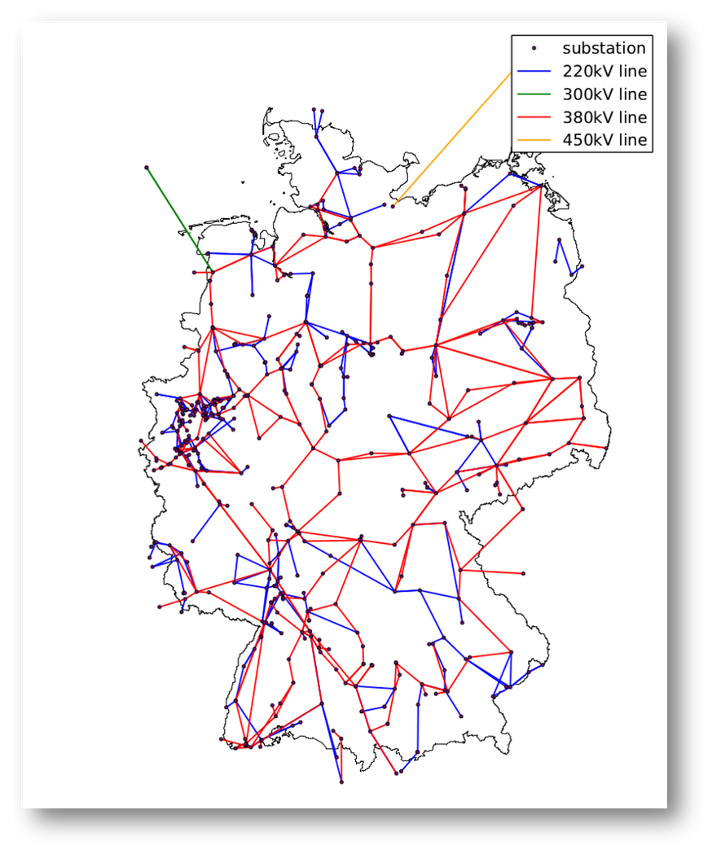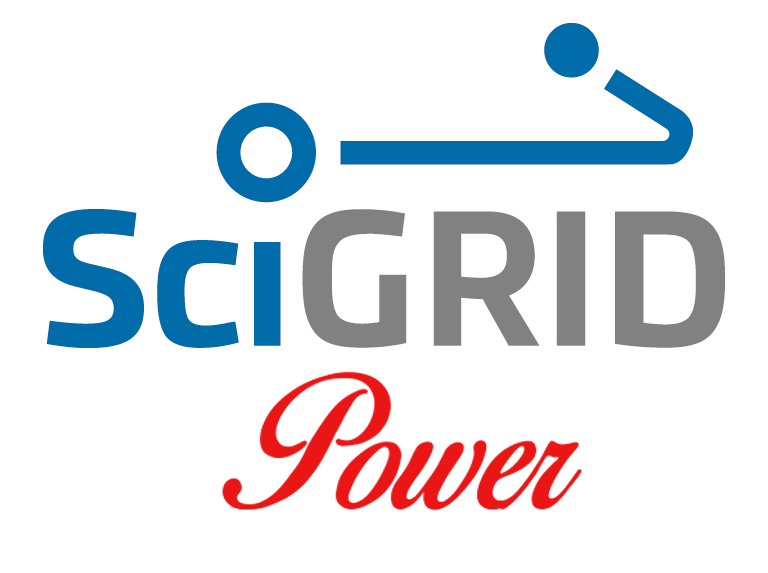Mo 15 Juni 2015 | -- (permalink)
We are very pleased to announce the first release of the "abstracted" SciGRID Transmission Network Model. The SciGRID model is released as version V0.1 and is available for the German transmission network. It can be downloaded here.
Version 0.1 of the SciGRID model includes:
-
The SciGRID model code, the filtered OpenStreetMap "power" data and the "power" database including all relevant data to build the abstracted transmission network model.
-
The documentation is a very important part of the SciGRID model. It is included as a user guide in the SciGRID release. The user guide contains detailed information about the SciGRID code, the OSM input data used, the simplifications and assumptions adopted for the OSM data abstraction, a step-by-step description of the model and how to run it.
-
The SciGRID release also includes two tables of the abstracted transmission network vertices (nodes) and links (edges). The vertices and links tables and a plot of the transmission network for Germany is included in the release. For convenience, they can be downloaded separately here.
This first version of the SciGRID model is a - yet not complete - "abstract" model of the German transmission grid and was implemented and successfully generated from OpenStreetMap (OSM) raw data. For this purpose, relations with the key "route" and the value "power" containing transmission lines and stations at high and very high voltage levels (220 kV and above) were evaluated. A plot of the topological network obtained from running the SciGRID model on Germany is shown below:
 Copyright: © OpenStreetMap contributors
Copyright: © OpenStreetMap contributors
For the time being, only relations with two stations and relations with three stations and a T-junction were used. The lengths of the transmission lines between the stations were also estimated. The restriction to the aforementioned relations was chosen for reasons of simplicity, since the estimation of the transmission lines length is straightforward in these two cases. The remaining relations (currently already more than 90% of the relations in Germany are covered) will be included in future releases.
